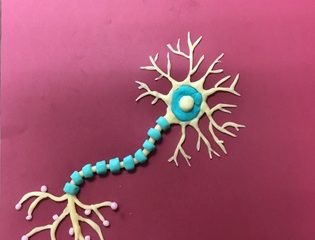Here is what I am reading today:
“Chief Technology Officer for the company, Sharon Presnell explained to those at the conference that Organovo’s 3D printing process involves printing out two different types of liver cells—hepatocytes and stellates—along with the linings of blood cells. The result is tissue that the company claims looks, feels and in many ways, behaves just like real human liver tissue. They say it can produce albumin, cholesterol and cytochrome P450s (enzymes that metabolize drugs)—and because of that is much better suited for testing new drugs. She added that the new 3D printing process marks another step towards the creation of full-size human livers for implanting in people to replace those that have failed, and even went so far as to predict that such technology will come to pass in her lifetime. “
“Mice with mutations in these genes show similar kidney disease to humans. In this recent collaborative study with groups at University College London and the University of Cambridge, Professor Sharpe and his team identified specific facial and dental abnormalities in PKD2 mutant mice. These features develop after birth and correlate with the function of PKD2 as a mechanoreceptor, and thus influence the structure of the face by influencing jaw strength and other features. To the naked eye, patients with ADPKD are not known to have any characteristic facial or dental features. To test whether there was any relationship in humans with these mutations, 3D facial shape analysis—using techniques developed by Professor Peter Hammond’s lab at UCL’s Institute of Child Health—was carried out on a small group of patients (11 female, 8 male, mean age 48 years).”
“Lead researcher Mark Wexler describes some of the challenges he and his colleagues – Andrew Glennerster, Patrick Cavanagh, Hiroyuki Ito, and Takeharu Seno – encountered in conducting their study. “We had the idea that these illusory jumps are related to dmax, the supposed upper speed limit on the steps that leads to motion perception, varies between individuals, and must be measured using random textures,” Wexler tells Medical Xpress. “For displacements below dmax you’re supposed to see the motion more or less correctly,” he explains, “while for displacement above dmax you’re just supposed to see noise – and the latter also turns out to be false.””
“”If a kid doesn’t interact in the right way because of a social deficit, that could be a communication difficulty, but you wouldn’t really say that their linguistic ability in a computational sense was hurt,” says Kenneth Wexler, a professor of brain and cognitive sciences at MIT. Wexler, a psychologist and linguist who has previously developed comprehensive models of how children learn language as part of normal development, has spent the past few years studying autistic children, in hopes of creating a framework to help pinpoint the source of their communication difficulties.”
““Many hallucinations are accompanied by a feeling of astonishment,” Sacks says. Although most of us don’t feel like we have much direct control over even our everyday process of creativity, we can still usually tell the difference between imagining something – a musical composition or a narrative arc – and witnessing a performance of it. Hallucinations blur that boundary.”
“”It may be particularly useful to start both at the same time,” said Abby King, PhD, lead author of the study and a professor of health research and policy and of medicine. “If you need to start with one, consider starting with physical activity first.” The few published studies on how to introduce more than one shift in healthy habits report conflicting findings—and few have looked at exercise and dietary change together. In examining the issue, the researchers also wanted to study people who specifically complained that the demands of their schedules didn’t give them enough time to make healthy dietary and exercise choices. The reasoning was that if successful programs could be developed for these time-strapped individuals, they would likely work for others, as well.”
Come hear me speak on ‘forbidden research’ and the challenge to the future of Psychology.




4 Comments
n_angel · April 25, 2013 at 2:23 pm
In response to “for best diet results: change both your diet and your exercise regimen”:
This article was very logical. I mean, for best diet results you need to change what you eat and your exercise regime, but it was interesting to see the differences between the groups of people. I am not surprised that if you have to choose between the two the exercise is more effective. After all, instead of ingesting calories you are burning them….
n_angel · April 25, 2013 at 2:31 pm
In response to “linguistic deficits and autism”:
I was extremely interesting to see the information presented about the syntax and how austistic children can not understand the reflexive pronoun but children with Aspergers syndrome were fine and how we might be able to link this disease partially with genetics.
mparisi · May 1, 2013 at 7:16 pm
Being a girl with normal weight fluctuations, the diet and exercise article seemed pretty accurate in it’s recommendations. Losing weight is a difficult accomplishment, with so much information about nutrition and exercise it can be really overwhelming. I try to maintain a healthy lifestyle by eating healthy and exercising often, but I have still gained weight depending on other outside circumstances and stress. From my experience, nutrition and exercise go hand in hand. Exercise can act as an appetite suppressant, so without it you may eat more. When you get in the habit of eating healthy, well portioned meals, you feel better about body and are more likely to continue an exercise regiment.
Hannah · May 22, 2013 at 9:43 pm
In response to “Autism and Linguistic Deficits”:
I would like to respond to this post by sharing a personal story about my experience with communicating with autistic children.
For the past two summers, I have worked at a Jewish overnight camp in the special needs program. My campers have disabilities such as Autism, Down syndrome, ADHD, cerebral palsy, and other conditions. One of the greatest struggles counselors like myself have during the summer is being able to communicate with our nonverbal campers. Last year, one of my favorite campers returned to camp with verbal skills far more advanced than they were the summer before. However, this young boy would still resort to biting his hand, hitting, dancing, and pacing in order to communicate his emotions at any given time. That summer, Jacob seemed frustrated and upset for an extended period of time, and despite his improvements in verbalization, he still struggled to communicate what was wrong. Realizing that Jacob LOVES surfing the internet (and can type at the speed of light), one of my co’s decided to try a new method of communication. He pulled out the small iPhone, opened the Note Pad app, and wrote “Jacob, tell me what is bothering you.” Jacob, whose shirts are always dirty with drool and food, swiftly typed back: “I want to wear clean underwear and shorts.”
Our jaws dropped. This whole time, Jacob was uncomfortable in his own clothes but could not find a way to communicate with us.
Finally, technology is allowing us to break the boundaries between typical communication and those suffering from disorders such as Autism. So often, people call children and adults with special needs “retarded” or “stupid” just because they cannot express themselves verbally. Most of the time, however, they have completely rational and emotional thoughts, but need to find a way to properly share those emotions. Computers and even iPhone are helping us make giant steps toward a world where people with Autism can be heard.
Autism. There’s an app for that.